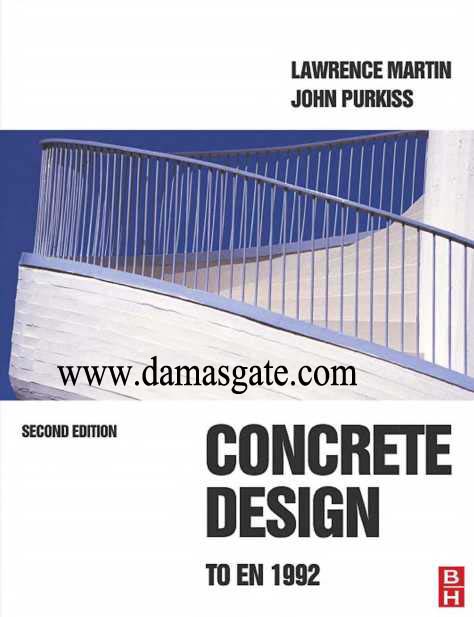Concrete design to EN1992

Preface
This book conforms with the latest recommendations for the design of reinforced
and prestressed concrete structures as described in Eurocode 2: Design of Concrete
Structures – Part 1-1: General rules and rules for buildings. References to relevant
clauses of the Code are given where appropriate.
Where necessary the process of design has been aided by the production of
design charts.
Whilst it has not been assumed that the reader has a knowledge of structural
design, a knowledge of structural mechanics and stress analysis is a prerequisite. The
book contains detailed explanations of the principles underlying concrete design and
provides references to research where appropriate.
The text should prove useful to students reading for engineering degrees at
University especially for design projects. It will also aid designers who require an
introduction to the new EuroCode.
For those familiar with current practice, the major changes are:
(1) Calculations may be more extensive and complex.
(2) Design values of steel stresses are increased.
(3) High strength concrete is encompassed by the Eurocode by modifications to the
flexural stress block.
(4) There is no component from the concrete when designing shear links for beams.
This is not the case for slabs where there is a concrete component.
(5) Bond resistance is more complex.
(6) Calculations for column design are more complicated.
(7) For fire performance, the distance from the exposed face to the centroid of the
bar (axis distance) is specified rather than the cover.
NOTE: As this text has been produced before the availability of the National Annex
which will amend, if felt appropriate, any Nationally Determined Parameters, the
recommended values of such parameters have been used. The one exception is
the value of the coefficient
allowing for long term effects has been taken as 0,85
(the traditional UK value) rather than the recommended value of 1,0.cc
Download
*

Preface
This book conforms with the latest recommendations for the design of reinforced
and prestressed concrete structures as described in Eurocode 2: Design of Concrete
Structures – Part 1-1: General rules and rules for buildings. References to relevant
clauses of the Code are given where appropriate.
Where necessary the process of design has been aided by the production of
design charts.
Whilst it has not been assumed that the reader has a knowledge of structural
design, a knowledge of structural mechanics and stress analysis is a prerequisite. The
book contains detailed explanations of the principles underlying concrete design and
provides references to research where appropriate.
The text should prove useful to students reading for engineering degrees at
University especially for design projects. It will also aid designers who require an
introduction to the new EuroCode.
For those familiar with current practice, the major changes are:
(1) Calculations may be more extensive and complex.
(2) Design values of steel stresses are increased.
(3) High strength concrete is encompassed by the Eurocode by modifications to the
flexural stress block.
(4) There is no component from the concrete when designing shear links for beams.
This is not the case for slabs where there is a concrete component.
(5) Bond resistance is more complex.
(6) Calculations for column design are more complicated.
(7) For fire performance, the distance from the exposed face to the centroid of the
bar (axis distance) is specified rather than the cover.
NOTE: As this text has been produced before the availability of the National Annex
which will amend, if felt appropriate, any Nationally Determined Parameters, the
recommended values of such parameters have been used. The one exception is
the value of the coefficient
allowing for long term effects has been taken as 0,85
(the traditional UK value) rather than the recommended value of 1,0.cc
Download
*